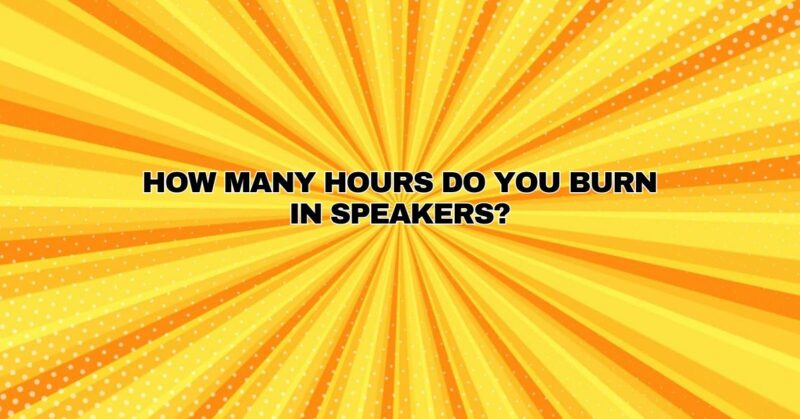The concept of a “burn-in” period for speakers has been a topic of debate among audiophiles and audio enthusiasts for many years. It refers to the idea that new speakers require a certain amount of time to reach their optimal performance level. In this comprehensive article, we will explore the concept of speaker burn-in, examine the arguments for and against it, and provide guidance on whether it’s a practice that should be considered when setting up your audio system.
Understanding the Burn-In Period
The concept of a burn-in period for speakers is based on the belief that the mechanical components of a speaker, such as the driver diaphragms and suspension materials, need time to settle and reach their ideal operating conditions. During this period, it is suggested that the speaker’s sound quality may change, typically improving as the components “break in.”
Arguments in Favor of Speaker Burn-In
- Mechanical Component Settling: Advocates of speaker burn-in argue that the diaphragms and suspension materials in speakers can exhibit stiffness when new. Over time and with use, these components may become more flexible, leading to improved sound quality.
- Resonance and Vibration Reduction: It is suggested that the initial vibrations and resonances in a new speaker can diminish during the burn-in period, resulting in reduced distortion and a smoother frequency response.
- Improved Speaker Consistency: Some proponents claim that burn-in can make speakers of the same model sound more consistent with each other, making it easier to achieve a balanced audio setup in multi-channel systems.
Arguments Against Speaker Burn-In
- Scientific Skepticism: Critics argue that the scientific basis for speaker burn-in is lacking. Controlled experiments have failed to consistently demonstrate significant changes in speaker performance after a burn-in period.
- Manufacturer Testing: Many reputable speaker manufacturers conduct extensive testing and quality control procedures before releasing their products. Speakers are designed to perform optimally right out of the box, negating the need for an extended burn-in period.
- Placebo Effect: Some listeners may perceive improved sound quality during a burn-in period due to psychological factors, even if there are no measurable changes in speaker performance.
What the Experts Say
The views on speaker burn-in are diverse among experts and audio professionals:
- Manufacturers: Most high-quality speaker manufacturers state that their products do not require a burn-in period. They design and test speakers to deliver their intended performance immediately.
- Audio Engineers: Audio engineers and professionals tend to be skeptical of the concept of speaker burn-in. They emphasize the importance of proper speaker setup, room acoustics, and equipment matching over extended break-in periods.
- Subjective Experiences: Some listeners report perceiving improvements in sound quality after using speakers for an extended period. However, these experiences are often subjective and vary widely.
Guidance for Listeners
Given the ongoing debate surrounding speaker burn-in, here is some guidance for listeners:
- Follow Manufacturer Instructions: Pay attention to the recommendations provided by the speaker manufacturer. If they specify a burn-in period, it’s advisable to follow their guidance.
- Proper Setup: Ensure that your speakers are correctly positioned and calibrated within your listening environment. This can have a more significant impact on sound quality than a burn-in period.
- Critical Listening: If you believe that your speakers’ sound quality has changed over time, critically listen to the changes. Document your observations and consider whether they are consistent with your preferences.
- Room Acoustics: Invest in room treatments and acoustic optimization if your listening room has significant acoustic challenges. Room acoustics can significantly impact sound quality.
- Subjective Satisfaction: Ultimately, the most important factor in evaluating speaker performance is your subjective satisfaction with the sound. If you enjoy the audio experience your speakers provide, that’s what matters most.
Conclusion
The concept of a burn-in period for speakers remains a contentious topic in the world of audio. While some listeners claim to have experienced improvements in sound quality after an extended break-in period, there is no definitive scientific evidence to support this practice.
Manufacturers design their speakers to deliver optimal performance from the start, and many experts in the audio industry emphasize the importance of proper setup, room acoustics, and equipment matching over the idea of speaker burn-in.
Ultimately, whether or not to engage in a burn-in period for your speakers is a matter of personal preference. If you choose to do so, it’s essential to approach the process with an open mind and critical listening skills, recognizing that the impact on sound quality may be subtle or subjective. Ultimately, the goal is to achieve an audio setup that brings you joy and satisfaction in your listening experience.


